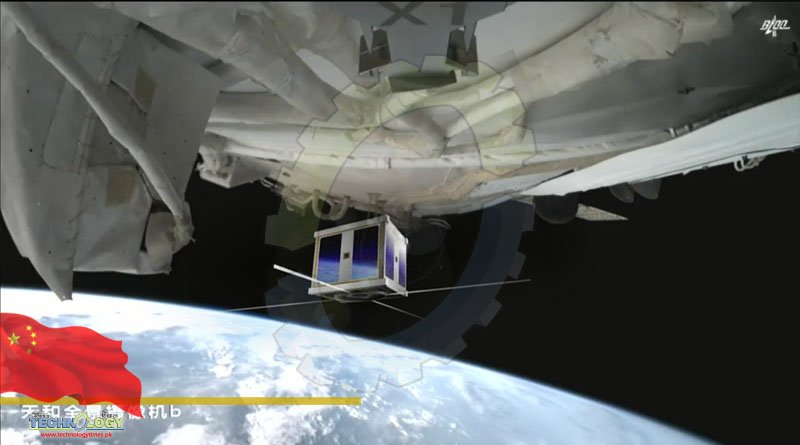The small spacecraft, also known as the Macao Student Science Satellite 1, carries both optical camera and radio payloads.

China has released a small test satellite into orbit from its recently completed Tiangong space station.
The small test satellite was released from a deployer on the Tianzhou 5 cargo ship, which is currently docked at Tiangong. Tianzhou 5 launched on Nov. 12 with the primary mission of delivering supplies to the space station to support the three Shenzhou 15 mission astronauts but also carried a number of cubesats.
The 26.5-pound (12 kilograms) satellite designated XW-4 (CAS-10) was released at 9:30 p.m. EST on Dec. 17 (0130 GMT on Dec. 18). The small spacecraft, also known as the Macao Student Science Satellite 1, carries both optical camera and radio payloads. These will be available for amateur radio operators on the ground to use for two-way communications and to send instructions for taking images.
The 12-kilogram satellite, named Macao Student Science Satellite 1, was released into orbit by the Tianzhou 5 cargo spacecraft on Sunday, Ho Iat-seng, chief executive of the Macao SAR, announced on Tuesday as the region marked its 23rd birthday.
Developed by the China Academy of Space Technology in Beijing, the satellite was carried into space by the Tianzhou 5 on Nov 12. Before its orbital deployment on Sunday, the satellite was contained in the cargo ship.
The satellite is tasked with helping students in Macao learn about Earth imaging, radio communication and other spaceflight activities, according to the China Manned Space Agency.
Tianzhou 5 is now connected to the Tiangong space station, where it is storing propellants, materials for scientific experiments and astronauts’ supplies.
The space agency said that to make the best use of the Tianzhou-series cargo ships’ abundant carrying capacity, scientists have used them to transport several payloads of scientific equipment and mini satellites to orbit. It said future Tianzhou missions will also offer educational opportunities to researchers at home and abroad.
Tiangong, also known as the “Heavenly Palace,” is a Chinese space station program. It involves the development and operation of a series of Chinese space stations, with the goal of conducting research and development in space.
In September 2011, China launched the Tiangong-1 space station, which was a prototype and test platform for the Tiangong program. The station was visited by Chinese astronauts on several missions and was used for various experiments and technology demonstrations.
In 2019, China launched the Tiangong-2 space station, which is the second space station in the Tiangong program. It is equipped with a number of scientific experiments and research facilities, and has been visited by Chinese astronauts on several missions.
Originally published at Space.Com